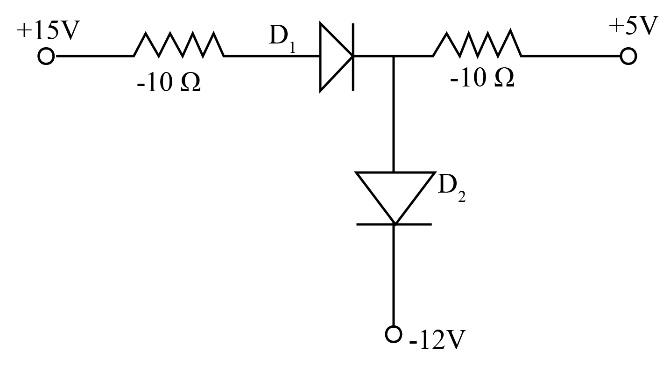Question
Question: In the above circuit diagram, identify diode (diodes) which is (are) forward biased.  which is (are) forward biased.

A. Only D1
B. Only D2
C. Both D1 and D2
D. Neither D1 nor D2
Solution
We will utilise the concept of the flow of current depending upon the voltage, which tells us that current will always flow from the higher value of potential to lower the value of potential. Depending upon the direction of flow of current through the diodes, we will conclude whether they are forward biased or not.
Complete step by step answer:
We know that a diode is formed by the combination of p-type and n-type semiconductor. The triangle represents a p-type semiconductor, and a straight line represents n-type semiconductor in the symbolic representation of a diode.
We also know that current always flows from higher potential to lower potential and it divides when there is a junction in the circuit, depending on the resistance the value of current is divided. From the given circuit, we can see that +15V is the highest value of potential in the current that is +5V , and −12V the voltage of power supply is lesser than the voltage +15V. Therefore we can say that the current will flow +15V to +5V and −12V voltage.
Based on the above explanation, we can say that current will enter through the p-type semiconductor and leaves through n-type semiconductor of the diode D1 and D2 which means both the diodes are in forward biased condition.
Therefore, we can conclude that both diodes D1 and D2 are forward biased, and option (C) is correct.
Note:
When a higher potential is connected with a p-type semiconductor, and a lower potential is connected with an n-type semiconductor in a p-n junction then this p-n junction is termed as the diode and connected is called forward biased.
